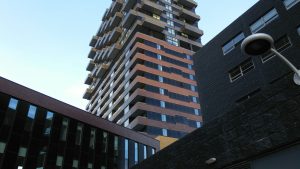Unlocking the Potential of Smart Urban Living Spaces
In today’s fast-paced world, the concept of smart living has gained popularity and importance. As our cities continue to grow and evolve, the need for efficient and sustainable living spaces has become a pressing issue. This has led to the rise of smart urban living spaces, which aim to use technology to improve people’s quality of life and make cities more livable. In this article, we will explore the potential of smart urban living spaces, and how they can truly unlock a better future for our cities and their inhabitants.
The Rise of Smart Urban Living Spaces
Smart urban living spaces, also known as smart cities or connected cities, are cities that use advanced technology and data to manage resources and services efficiently. These cities are designed to enhance the quality of life for its citizens, while also addressing the challenges of a growing population and urbanization. According to a report by the United Nations, 68% of the world’s population is projected to live in urban areas by 2050. This highlights the need for cities to become smarter and more sustainable in order to accommodate and support their inhabitants.
Benefits of Smart Urban Living Spaces
Improved Quality of Life
One of the key benefits of smart urban living spaces is the improvement of the overall quality of life for its residents. With the use of technology, cities can provide better and more efficient services, such as transportation, healthcare, and public safety. For example, smart transportation systems can reduce traffic congestion, leading to shorter commute times and less air pollution. Smart healthcare systems can also improve access to healthcare services and enable remote consultations, making it easier for residents to take care of their health.
Sustainable Development
In order to have a better future, it is important for cities to focus on sustainable development. Smart urban living spaces use technology to manage resources, reduce waste, and promote energy efficiency. For instance, smart water management can help cities better monitor and conserve water usage, while smart energy grids can optimize energy usage and reduce carbon emissions. This not only benefits the environment but also helps cities become more cost-effective and resilient.
Inclusive and Accessible
Social inclusion and accessibility are major concerns in modern cities. Smart urban living spaces aim to address these issues by providing equal opportunities and access for all residents. By using technology, cities can ensure that services are accessible to people with disabilities, the elderly, and other marginalized groups. For example, smart public transportation systems with real-time updates and accessibility features can improve mobility for people with disabilities, making cities more inclusive.
The Future of Smart Urban Living Spaces
The potential of smart urban living spaces is endless. With advancements in technology, cities can continue to innovate and improve the lives of their citizens. Some future developments include the use of artificial intelligence (AI) and Internet of Things (IoT) to create efficient and interconnected systems. This can lead to better management of traffic, energy, and waste, making cities even more sustainable and livable.
In Conclusion
The concept of smart urban living spaces is one that holds great promise for the future of our cities. By utilizing technology and data, cities can become more efficient, sustainable, inclusive, and accessible. However, in order to fully unlock the potential of smart urban living spaces, there must be collaboration and investment from governments, businesses, and citizens. With a combined effort, we can create truly smart cities that benefit not only the present but also the generations to come. Let us embrace the potential of smart urban living spaces and work towards building a better tomorrow for our cities.











